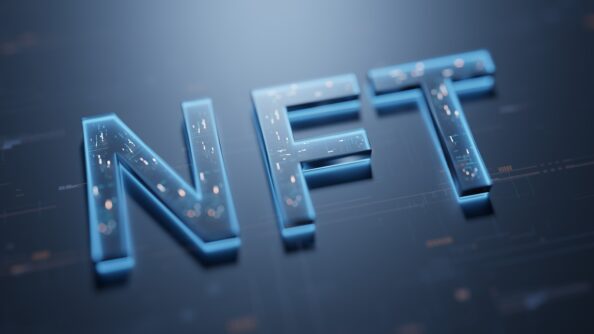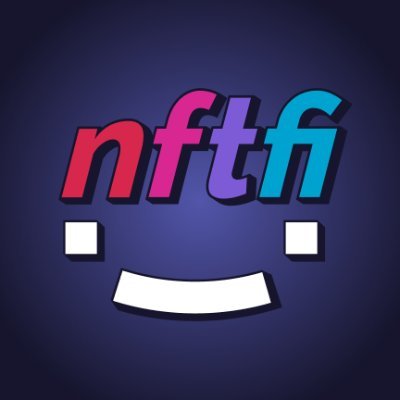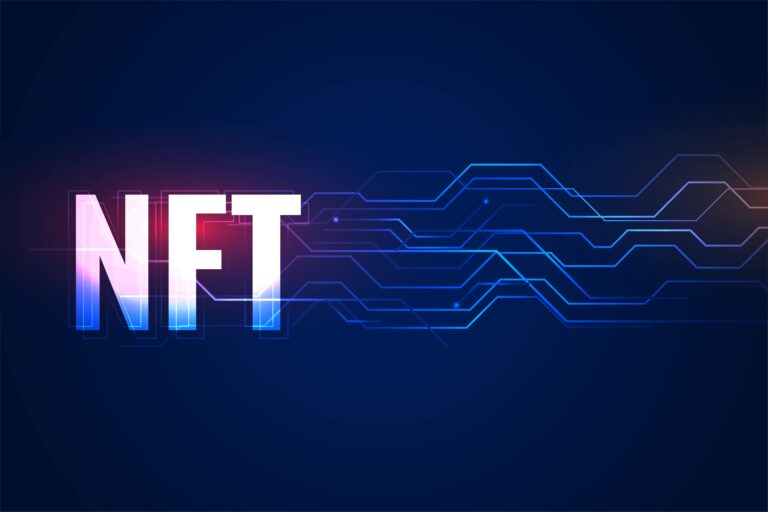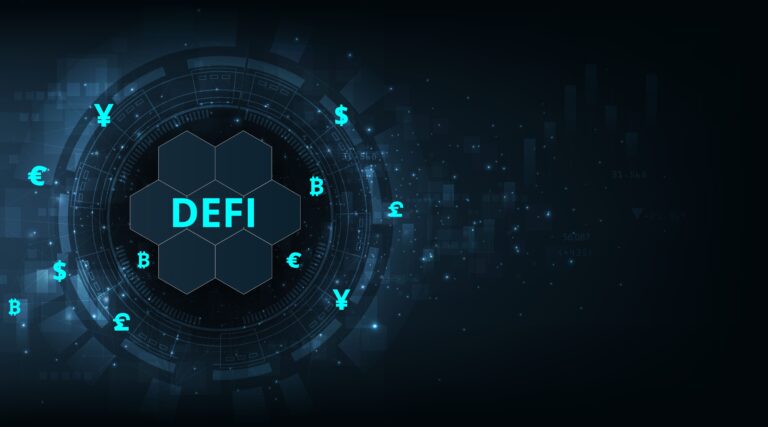
DeFi (Decentralized Finance) and NFTs (Non-Fungible Tokens) remain two of the most transformative trends in the blockchain industry. While NFTs are primarily associated with the tokenization of unique assets, DeFi provides decentralized access to financial services without traditional intermediaries. In 2025, the convergence of these two technologies is creating innovative use cases and disrupting traditional finance models.
DeFi refers to a decentralized ecosystem of financial applications built on public blockchains like Ethereum, Arbitrum, and Avalanche. These apps allow users to:
Unlike traditional finance, DeFi is:
In 2025, the DeFi market has rebounded, with Total Value Locked (TVL) surpassing $90B across chains, driven by new Layer 2 protocols and real-world asset integration.
To explore NFTs further, read our article on NFT art or NFT investing.

The integration of NFTs into DeFi opens the door to new financial instruments and solutions:
Borrowers can use NFTs as collateral for crypto loans. Platforms like NFTfi, Arcade.xyz, and TrustNFT evaluate NFT value using:
New practice: Platforms now use AI-powered NFT appraisal engines and Chainlink oracles to dynamically assess collateral value. Some also incorporate risk scoring models that analyze wallet behavior and NFT provenance to reduce default risk.
Use Case Example: On NFTfi, a borrower can pledge a high-value NFT (e.g., a BAYC) and receive a 60–70% loan-to-value ratio in stablecoins, with a 14-day repayment term. If unpaid, the lender receives the NFT.

High-value NFTs can be fractionalized using protocols like Unic.ly, Fractional.art, and Enzyme. This allows multiple users to invest in a single NFT by owning ERC-20 tokens representing fractional ownership.
Benefits:
Example: A $100K digital artwork can be fractionalized into 10,000 tokens worth $10 each and traded like any ERC-20 asset.
DeFi is expanding into real-world finance through NFT tokenization. Platforms like Centrifuge, Goldfinch, and Credix tokenize real-world invoices, real estate, and loan contracts as NFTs. These NFTs are then:
Key Insight: This approach enables undercollateralized or revenue-based lending for SMEs in emerging markets using DeFi rails and NFT-based documentation.
NFTs are being used to represent decentralized insurance policies. InsurAce, Ease, and CoverCompared let users:
Use Case: A user can purchase an NFT-based policy covering $50,000 in smart contract exploits. If a breach occurs, the payout is instant and automated based on oracle-triggered conditions.
Certain DeFi protocols use NFTs to gate staking pools, represent staking positions, or generate interest:
Example: An NFT could represent a staked position in Aave, and accrue yield or serve as collateral elsewhere in the DeFi ecosystem.
These innovations turn NFTs from static collectibles into programmable financial assets with real utility and yield potential.

Aave is a leading DeFi lending platform that has integrated NFTs via Aavegotchi, a gameified lending and staking ecosystem where users stake AAVE-backed NFTs. In addition, Aave Arc supports institutional access, and new developments are exploring NFT bonds and RWA collateral through verified issuers.
Emerging use case: Tokenized luxury watches or real estate properties as NFT collateral on Aave for undercollateralized loans, powered by Chainlink Proof of Reserve.
With multichain ecosystems booming, NFTs now play a role in cross-chain DeFi strategies:
Projects like Stargaze and Omniflix use Cosmos SDK to create interoperable NFTs across Cosmos-based chains. IBC (Inter-Blockchain Communication) enables cross-chain NFT transfers and staking.
DeFi Use Case: NFT holders can stake across chains and use tokenized credentials for governance or access control in DeFi DAOs operating across multiple Cosmos zones.
Unique Network and RMRK offer advanced NFT logic and composability in Polkadot’s parachain ecosystem. NFTs here can:
Example: An NFT in RMRK could represent a user’s cross-protocol reputation score used for lending rates or DAO access.
LayerZero enables cross-chain messaging for NFTs and DeFi protocols. Projects can build NFTs that retain state across chains (e.g., staking history, LP data). This opens new possibilities for:
Example: An NFT representing staked liquidity on Arbitrum can be migrated to Optimism while retaining its staking history and reward eligibility.
The following projects are at the forefront of integrating NFTs and DeFi in 2025. They represent a diverse range of use cases including lending, staking, yield generation, cross-chain functionality, and real-world asset tokenization. These platforms are shaping the next evolution of financial infrastructure by turning NFTs into programmable and composable financial instruments.
| Project | Functionality |
|---|---|
| Uniswap v3 | NFT-based liquidity positions |
| Solv Protocol | NFT vouchers for vesting schedules |
| Charged Particles | Tokenized yield-bearing NFTs |
| Arcade.xyz | NFT-backed loans via Pawn protocol |
| Centrifuge | RWA tokenization using NFT standards |
| RMRK (Polkadot) | Advanced DeFi-NFT composability |
| Stargaze (Cosmos) | Interchain NFTs and NFT staking |
| LayerZero | Cross-chain NFTs and DeFi state sync |
| Aavegotchi | NFT-based lending gamification |
| Goldfinch | Under-collateralized loans with NFT docs |
| Element Finance | Tradable NFT yield instruments |

Uniswap is a DeFi protocol for automated liquidity provision and cryptocurrency exchange. Uniswap3 addressed the issue of temporary loss common in the Curve protocol and created a whole new application for NFTs by introducing non-fungible liquidity pools.
As a result, liquidity providers don’t have to participate in all prices in the pool but can distribute their capital over a specific price range. In other words, liquidity providers achieve higher exposure to desired assets while reducing the downside risks.
Solv Protocol

Solv Protocol is a DeFi platform that enables the creation and trading of Solv Vouchers, which are specific NFTs. Solv Vouchers are a type of derivative that represent vesting assets, namely tokens. These assets are locked up and then released periodically. This guarantees a long-term commitment from team members and investors, strengthening the project’s growth and success.
Locked assets are typically illiquid, so the only thing to do is to passively wait for the vesting period to expire and claim the assets. Solv Vouchers allow the owners of the locked assets to actively control them, meaning they can buy, sell, split, and merge vouchers into larger entities.
Solv Protocol issues financial NFTs with the ERC-325 token standard to streamline the implementation and programming of advanced financial products.
For deeper insights, check out our related guides:

NFTs are more than digital collectibles—they are becoming the backbone of next-gen DeFi applications. In 2025, we’re seeing NFTs unlock value through collateralization, governance, staking, and real-world asset integration. DeFi, in turn, brings liquidity, transparency, and programmability to NFT ecosystems.
With the rise of cross-chain infrastructure and real-world financial applications, the fusion of DeFi and NFTs is setting the stage for the next wave of blockchain innovation.
Contact our experts today to explore how we can help launch your next NFT-powered financial solution.